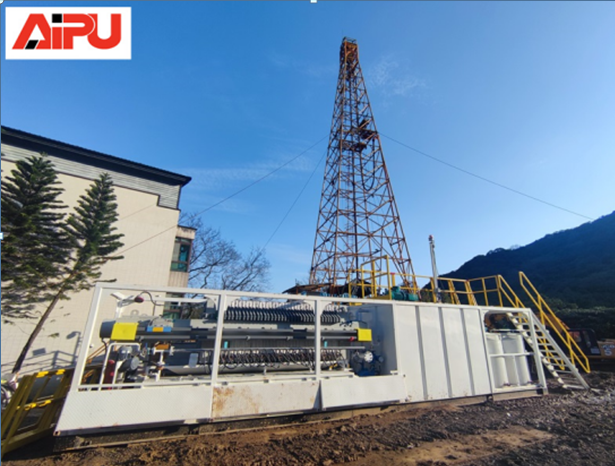Maximizing Performance in Drilling Operations
Solids control equipment plays a crucial role in the oil and gas drilling industry. By effectively removing solid particles from drilling fluids, it helps to ensure the longevity of drilling equipment. This article will explore the significance of solids control equipment and how it contributes to the extended life of drilling tools.
Understanding Solids Control Equipment
Solids control equipment consists of a series of devices designed to separate solids from drilling fluids. The main components include shale shakers, desanders, desilters, and centrifuges. Shale shakers are the first line of defense, using vibrating screens to remove large solid particles. Desanders and desilters further separate smaller particles through hydrocyclone technology. Centrifuges are used for the final separation, removing the finest solids. These equipment work in tandem to maintain the quality of the drilling fluid.
The Impact of Solids on Drilling Equipment
When drilling, the presence of solids in the drilling fluid can cause significant damage to the equipment. Abrasive solids can wear down the drill bit, reducing its cutting efficiency and lifespan. They can also cause blockages in the drilling mud pumps, leading to decreased flow rates and potential pump failures. Moreover, solids can accumulate in the wellbore, increasing friction and torque, which may result in drill string breakage. Therefore, controlling solids is essential to prevent these costly damages.
Benefits of Solids Control for Equipment Longevity
Using solids control equipment offers several benefits for the longevity of drilling equipment. Firstly, by removing solids, it reduces the wear and tear on the drill bit, allowing it to last longer and perform more effectively. Secondly, it helps to keep the drilling mud pumps clean and functioning properly, minimizing the risk of pump breakdowns. Thirdly, it prevents the accumulation of solids in the wellbore, reducing friction and torque, and thus protecting the drill string. Overall, these benefits translate into lower maintenance costs and less downtime for equipment repairs.
Maintenance and Optimization of Solids Control Equipment
To ensure the effectiveness of solids control equipment and maximize its contribution to drilling equipment longevity, regular maintenance is necessary. This includes inspecting and replacing worn screens on shale shakers, checking the hydrocyclones for blockages, and maintaining the centrifuge's performance. Additionally, optimizing the operation of the solids control system is crucial. This may involve adjusting the flow rate of the drilling fluid, selecting the appropriate screen mesh size, and properly balancing the operation of different equipment. By doing so, the solids control equipment can operate at its best, providing long - term protection for drilling equipment.
In conclusion, solids control equipment is an indispensable part of the drilling process. By effectively managing solids in the drilling fluid, it safeguards the drilling equipment, extends its lifespan, and ultimately enhances the efficiency and profitability of drilling operations.

Understanding Solids Control Equipment
Solids control equipment consists of a series of devices designed to separate solids from drilling fluids. The main components include shale shakers, desanders, desilters, and centrifuges. Shale shakers are the first line of defense, using vibrating screens to remove large solid particles. Desanders and desilters further separate smaller particles through hydrocyclone technology. Centrifuges are used for the final separation, removing the finest solids. These equipment work in tandem to maintain the quality of the drilling fluid.
The Impact of Solids on Drilling Equipment
When drilling, the presence of solids in the drilling fluid can cause significant damage to the equipment. Abrasive solids can wear down the drill bit, reducing its cutting efficiency and lifespan. They can also cause blockages in the drilling mud pumps, leading to decreased flow rates and potential pump failures. Moreover, solids can accumulate in the wellbore, increasing friction and torque, which may result in drill string breakage. Therefore, controlling solids is essential to prevent these costly damages.
Benefits of Solids Control for Equipment Longevity
Using solids control equipment offers several benefits for the longevity of drilling equipment. Firstly, by removing solids, it reduces the wear and tear on the drill bit, allowing it to last longer and perform more effectively. Secondly, it helps to keep the drilling mud pumps clean and functioning properly, minimizing the risk of pump breakdowns. Thirdly, it prevents the accumulation of solids in the wellbore, reducing friction and torque, and thus protecting the drill string. Overall, these benefits translate into lower maintenance costs and less downtime for equipment repairs.
Maintenance and Optimization of Solids Control Equipment
To ensure the effectiveness of solids control equipment and maximize its contribution to drilling equipment longevity, regular maintenance is necessary. This includes inspecting and replacing worn screens on shale shakers, checking the hydrocyclones for blockages, and maintaining the centrifuge's performance. Additionally, optimizing the operation of the solids control system is crucial. This may involve adjusting the flow rate of the drilling fluid, selecting the appropriate screen mesh size, and properly balancing the operation of different equipment. By doing so, the solids control equipment can operate at its best, providing long - term protection for drilling equipment.
In conclusion, solids control equipment is an indispensable part of the drilling process. By effectively managing solids in the drilling fluid, it safeguards the drilling equipment, extends its lifespan, and ultimately enhances the efficiency and profitability of drilling operations.








